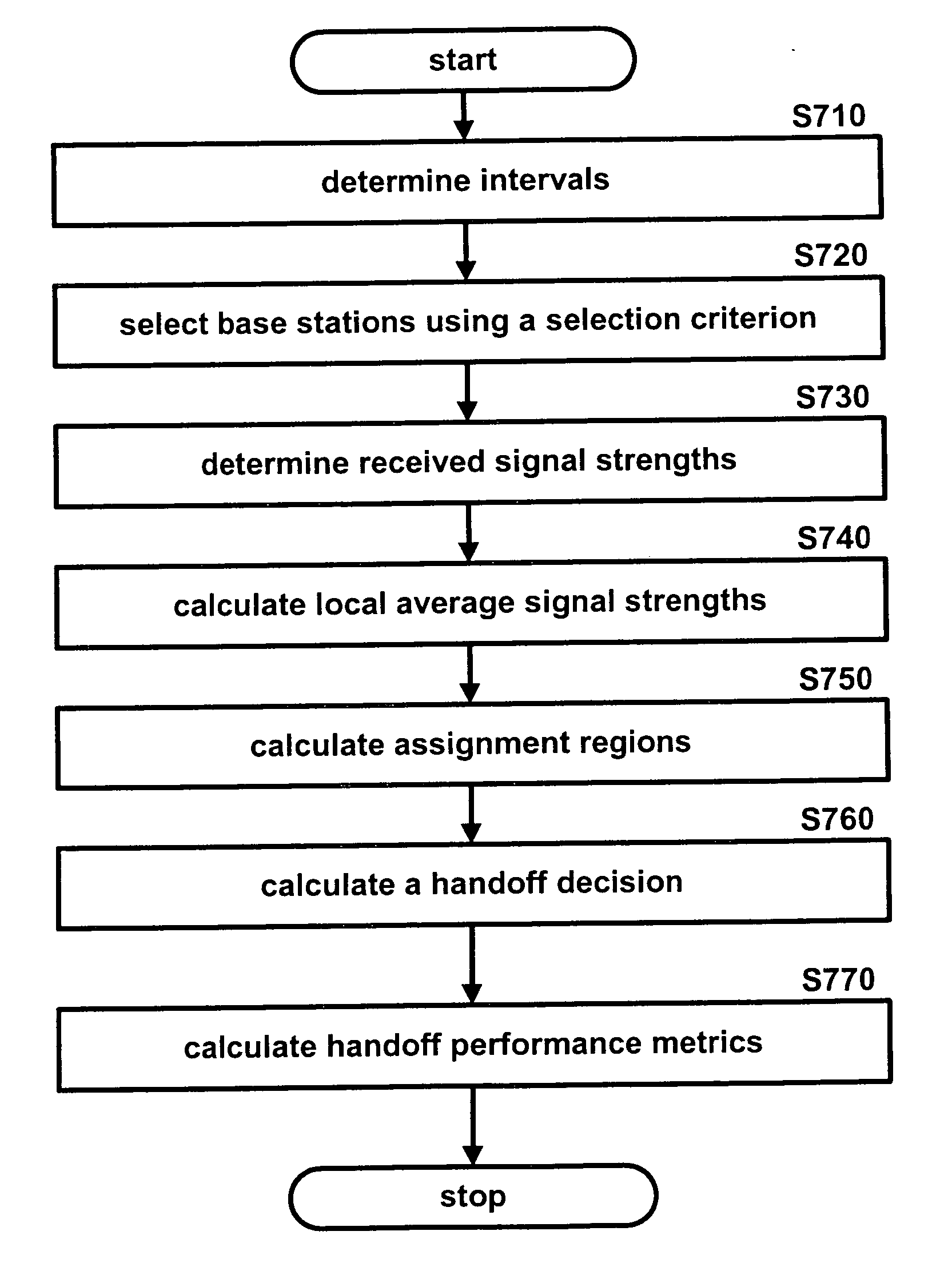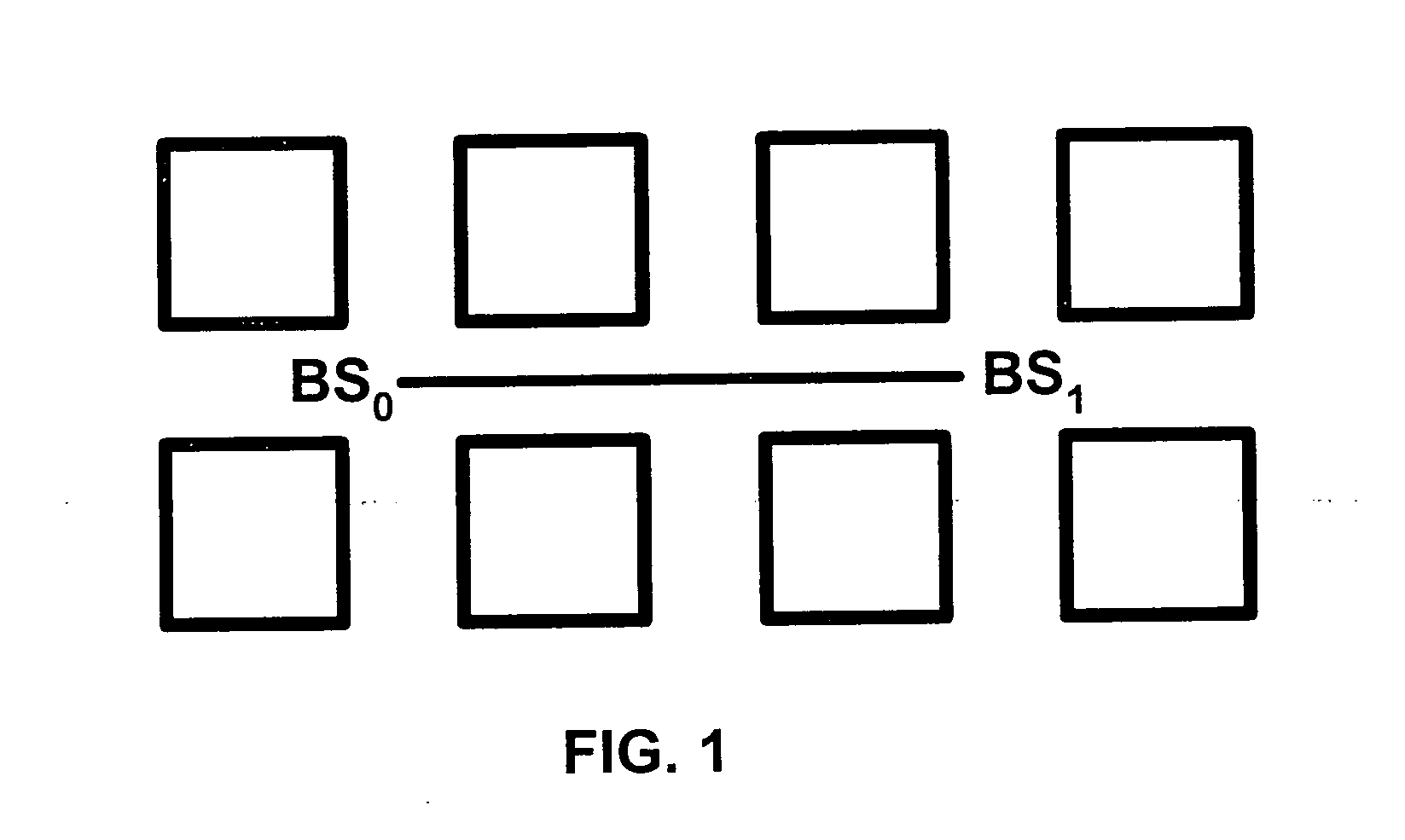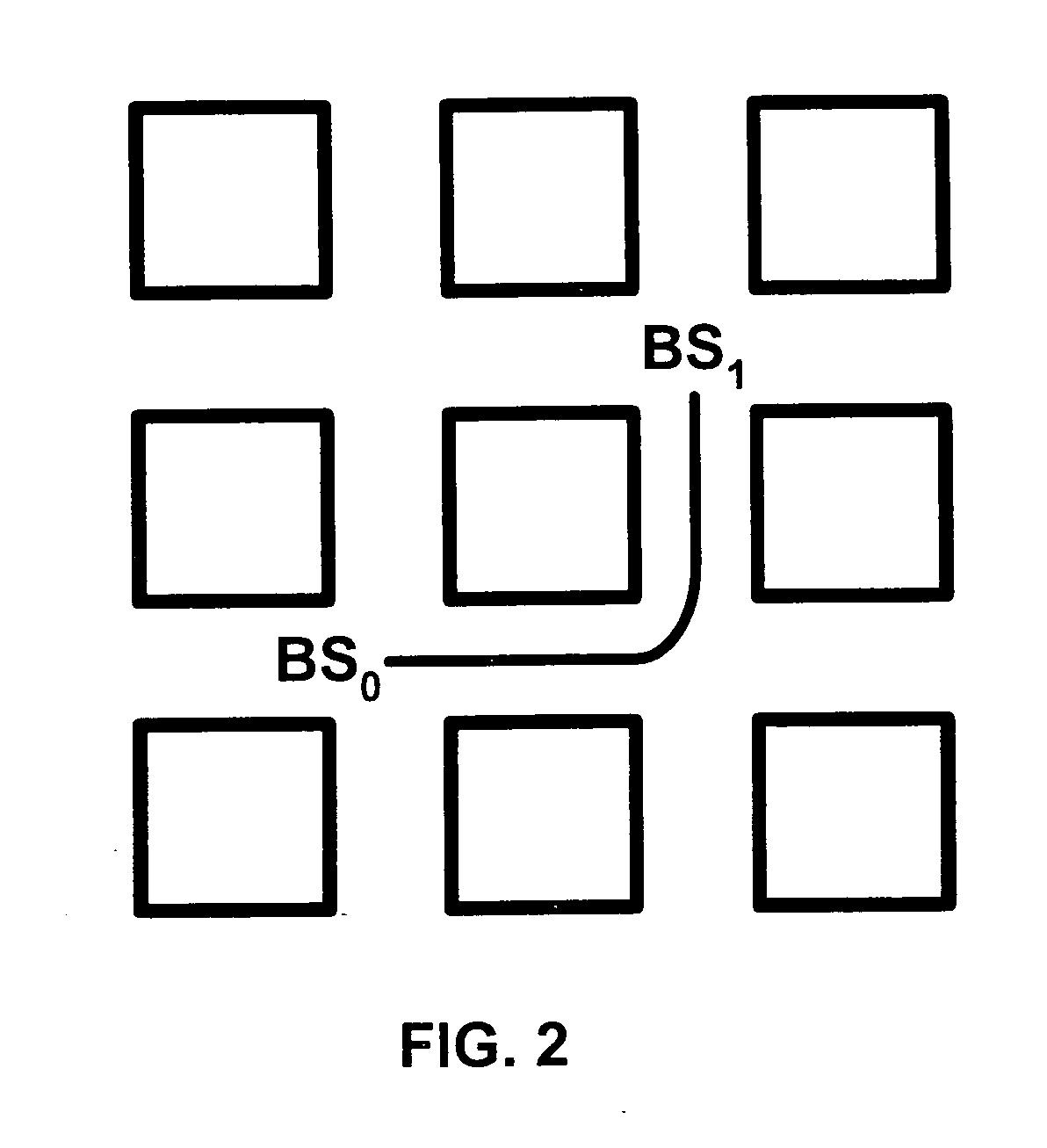Cellular network handoff decision mechanism
- Summary
- Abstract
- Description
- Claims
- Application Information
AI Technical Summary
Benefits of technology
Problems solved by technology
Method used
Image
Examples
Embodiment Construction
[0032] The present invention is a cellular network handoff decision mechanism that reacts quickly to corner effects in microcellular urban environments and may be efficient over a wide range of hysteresis values. This invention introduces local averaging to remove fast fading fluctuations without affecting path loss and slow fading characteristics. Further, an embodiment of the present invention may be used to analyze the performance of handoff with local averaging, thus avoiding a need for computer simulation of the cellular system. Another embodiment of the present invention may be used as a tool for the optimization and dimensioning of fast handoff mechanisms in microcellular urban environments.
[0033] In urban microcellular environments, fast handoff mechanisms are needed to react to sudden changes in path loss characteristics that typically occur when a mobile cellular unit turns around street corners. The present invention is a cellular network handoff decision mechanism that ...
PUM
 Login to View More
Login to View More Abstract
Description
Claims
Application Information
 Login to View More
Login to View More - R&D
- Intellectual Property
- Life Sciences
- Materials
- Tech Scout
- Unparalleled Data Quality
- Higher Quality Content
- 60% Fewer Hallucinations
Browse by: Latest US Patents, China's latest patents, Technical Efficacy Thesaurus, Application Domain, Technology Topic, Popular Technical Reports.
© 2025 PatSnap. All rights reserved.Legal|Privacy policy|Modern Slavery Act Transparency Statement|Sitemap|About US| Contact US: help@patsnap.com



